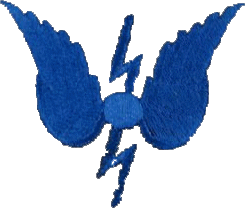|
|
|
|
|
DATE OF DESIGN | |
|
|
FREQUENCY RANGE | |
4.3 to 6.7 Mc/s. |
|
POWER SUPPLIES | |
Type 613FS, which is fitted in the majority of cases, is operated from a mains supply of 230V AC 50c/s using a selenium rectifier for the relay and signalling supplies.
Type 613ES, which is battery operated from a 24V battery through a rotary transformer, is intended for mobile stations. |
|
RANGE IN MILES. | |
|
|
TYPE OF SET (VALVES USED) | |
|
|
WAVEFORM | |
CW, MCW or R/T (See Notes). |
|
ASSOCIATED WAVEMETER. | |
|
|
METHOD OF PRODUCING OSCILLATIONS | |
|
|
WHERE USED/FITTED | |
|
|
FURTHER READING | |
|
|
PHOTOS, SCHEMATICS, DOCUMENTS | |
|
|
NOTES. | |
The Type 613 is the name used by the Royal Navy for the low power HF transceiver consisting of the RAF airborne transceiver Type TR 1196, modified by ground use. It is fitted in Control Buildings, Runway Control Vans (Van 45) and Bombing Range Quadrant Huts at Royal Naval Air Stations.
The receiver, is NOT designed for CW, and CW signalling; facilities are only provided for use where a CW type of receiver is substituted for the normal Type 613 receiver unit. When CW or MCW is used "listen through" facilities are provided. The T/RA/R switch, S3, on the Controller Electric, is left in the RECEIVE position for all conditions of transmission and reception.
Normally the Type 613 should be installed for "separated local control" which permits the operators position to be some 120 feet from the transceiver itself. In Control Buildings, the Type 613 is installed in duplicate. Only one of these sets two transceivers can be used at any given time, the second being available as a stand-by. Should power fail to the Control Building, full power back-up from an Auto Start Petrol Electric Generator (A.S.P.E.G.) will be available in just a few seconds.
The set will work into a whip aerial Type AWF when available. In the meantime (1946) Type AFG (quarter-wavelength vertically rigged on a 55-foot pole fed by coaxial cable) should be used.
|


